“Hey everyone, Mark here — has anyone else run into this issue where transactions just aren’t showing up in QuickBooks Desktop?
I’m on QuickBooks Desktop Pro 2024, and I recently noticed that a few vendor payments and bank transactions I entered last week have completely disappeared from the register. I know for a fact I saved them — no errors popped up — but now they’re nowhere to be found.
I’ve checked all the filters, date ranges, and even toggled between accounts, but still nothing. What’s weird is that the account balances are off, and now I’m out of sync during reconciliation. I also ran the Audit Trail, and there’s no trace of those entries at all.
I’m the only user on this company file, and I haven’t restored any backups or changed any preferences lately. Could this be a sign of data corruption, or maybe a glitch in the file? I’d really appreciate any guidance.
Before deactivating or archiving your QuickBooks account, it’s a good idea to check for common issues like “Transaction Not Showing Up” Error in QuickBooks Desktop Pro 2024. Fixing this issue will ensure all your data is complete and accurate, so you can retain necessary records without worrying about missing transactions in the future.
Hi Mark,
Thanks for sharing the details — I can understand how frustrating it must be to have your transactions disappear, or don’t reflect in registers, reports, or reconciliations — even after being entered and saved correctly. This can lead to discrepancies in your books, delays in closing reports, and unnecessary confusion. You need to try first:
- Close and reopen the register or report — sometimes QuickBooks needs a moment to catch up.
- Select Customize Report > Filters > Remove All, and reset the date range.
- Press Ctrl+F and search by date, amount, memo, or reference number.
- Double-check that you’re in the correct bank, customer, or vendor account when searching for the missing transaction.
If the transaction not showing up in QuickBooks Desktop Pro 2024, don’t worry —since you’ve already ruled out filters, date ranges, and different accounts, let’s walk through a few other potential causes and solutions to get things back on track.
Reasons for the “Transaction Not Showing Up” Error
There are certain underlying causes leading to Transaction not showing up error in QuickBooks Desktop Pro 2024:
- A damaged company file can silently prevent transactions from saving or displaying properly.
- QuickBooks may have encountered an internal error during the save, but didn’t flag it.
- Sometimes transactions are recorded but not linked correctly to the account register or report views.
- Oversized Transaction Log File can cause syncing or performance issues.
- Rare changes in settings or templates may affect transaction display.
- Even though you’ve checked, filters (date, account, class) still cause most visibility issues such as incorrect filters or sorting.
- Hard Drive or network-related issues can prevent the transactions from saving properly.
What Happens When Transaction Not Showing Up in QuickBooks Desktop Pro 2024?
When transactions go missing or fail to appear unexpectedly, it can result in serious discrepancies across your accounting system. These discrepancies not only affect your day-to-day bookkeeping but can also have long-term consequences for reporting accuracy, compliance, and financial planning.
- Incorrect account balances and financial data.
- Mismatched reconciliation with bank or vendor statements.
- Audit Trail gaps which may impact compliance or reviews.
- Misleading reports including Profit & Loss or A/P aging.
- Increased risk of rework and double entries.
Fix the “Transaction Not Showing Up” Error in QuickBooks Desktop Pro 2024
Mark, since you’re using QuickBooks Desktop Pro 2024 and notice that a transaction isn’t appearing where it should—whether in reports, registers, or account histories—don’t worry. This issue is common and can often be resolved with a few troubleshooting steps.
Step 1: Update QuickBooks Desktop to the latest version
- Hold and Press F2 on your keyboard.
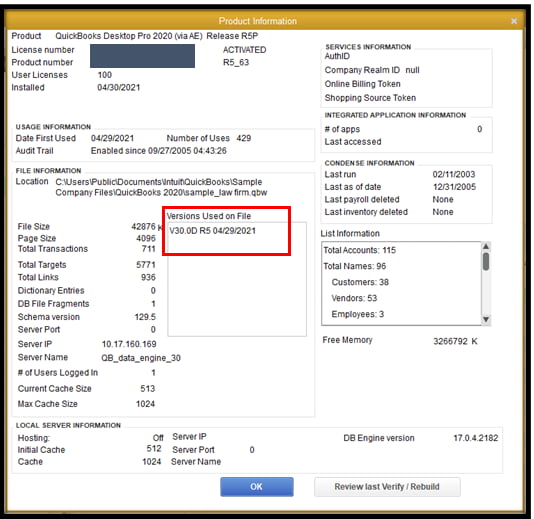
- If you’re using an old version, navigate to the Help menu on the upper right side.
- Select “Update QuickBooks Desktop” and choose “Update Now.”
- Click “Get Updates” to start the download.
- Install the new release if prompted.
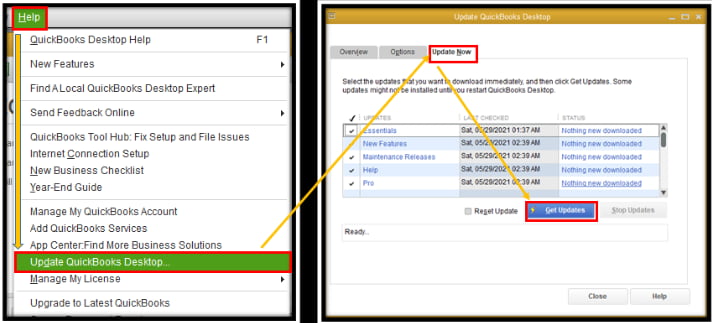
Step 2: Verify and Rebuild Your Company File
The verify tool finds the most common issues in a company file and the rebuild tool fixes them.
Verify your Company Data
- Move to Window and select Close All.
- Open the File menu and choose Utilities.
- Click Verify Data. If you see:
- QuickBooks detected no problems with your data—your data is clean, and you don’t need to do anything else.
- An error message—search for it on our QuickBooks Desktop support site for how to fix it.
- Your data has lost integrity—Data damage was found in the file. Rebuild your data to fix it.
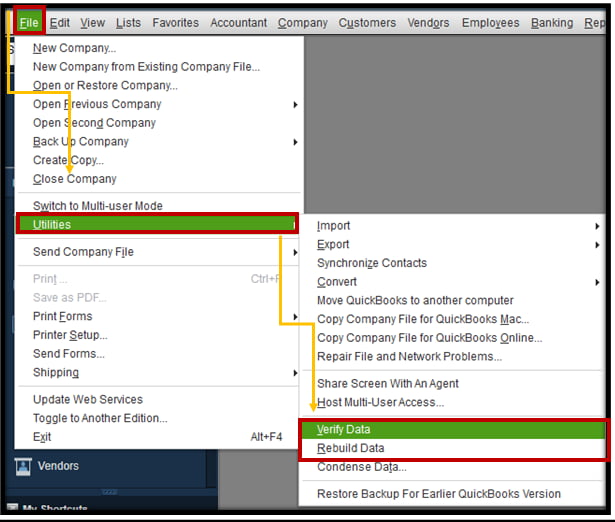
Note: If you use Assisted Payroll contact us before rebuilding your data.
Rebuild Your Company File Data
- Navigate to File > Utilities, and select Rebuild Data.
- QuickBooks will ask you to create a backup before it rebuilds your company file. Press OK. A backup is required before you can rebuild.
- Choose where you want to save your backup, and click OK. Don’t replace another backup file. Enter a new name in File name and press Save.
- Select OK when you get the message Rebuild has completed.
- Go to File > Utilities and select Verify Data again to check for additional damage.
- If the verify finds more damage, fix it manually. Search for the error(s) in the qbwin.log on the QuickBooks Desktop support site for how to fix it.
- If your error can’t be found, restore a recent backup. Move to File and choose Open or Restore Company.
Note: Don’t replace your existing company file. You’ll need to enter info into your company file again since the backup was created.
Step 3: Use the “Find” Feature to Search Manually
If you have a specific transaction in mind, you can use the Find feature and get matching results for transactions only.
Note: Switch to the Find window by selecting Go to Find if you’re in the Search window already.
- Click Edit, and select Find.
- Select Go to Find in the Search window.
- From the Find window, navigate to the Filter column and select the type of information you’re searching for.
- Note: You can select as many filters to limit the search and find the transaction.
- Enter your search criteria under the fields beside the filter type.
- Choose Options to further limit the search using report filters.
- Select Find.
- Under the search results, choose the transaction you want to see and select Go To.
Important: To print a report showing the transactions that QuickBooks found, click Report. When the report displays on the screen, select Print.
Step 4: Review the Audit Trail Report
The Audit Trail reports provide valuable historical documentation, which enhances accountability and transparency.
- Navigate to the Reports menu > Accountant & Taxes.
- Choose Audit Trail.
- Beside the Date Entered/Last Modified area, set the field to Custom.
- Select your desired date manually.
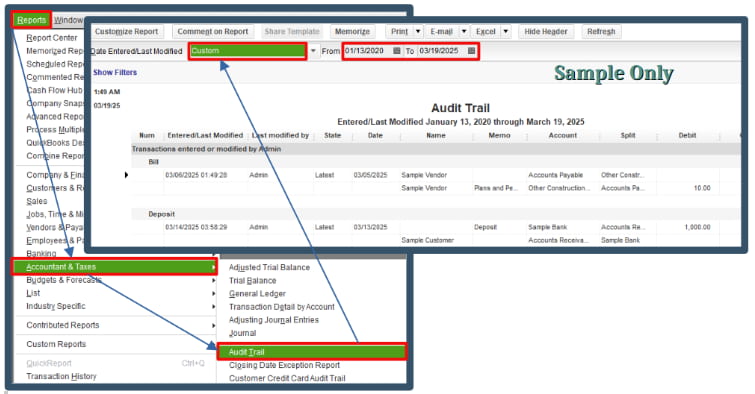
To download the report, click Export. Select the Create New Worksheet option, and press Export. See the attached screenshots for visual reference.
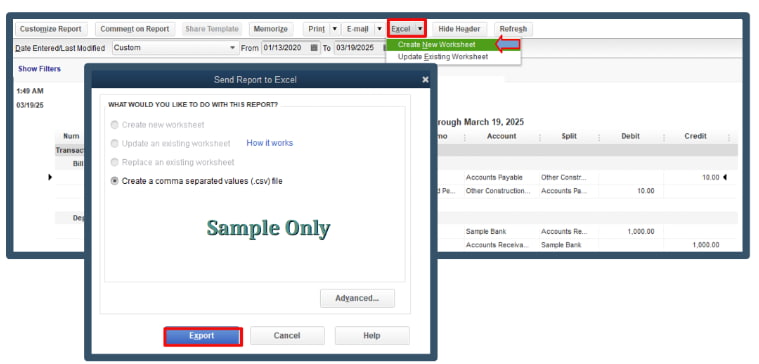
Step 5: Change the Company File Location
By default, QuickBooks saves the company file to C:\Users\Public\Documents\Intuit\QuickBooks\yourcompanyfile.qbw. To change the location where your company file is stored, do the following:
- Go to the location where your file is currently saved.
- Right-click your company file and select Copy.
- Navigate to another location (e.g. desktop or new folder/ location where you want to save it) right-click to an open area and paste the company file.
- Open QuickBooks and choose Open or restore an existing company then select Open a company file.
- Click Next to proceed.
- On the next window, locate your file at the location where you paste the file.
- Once you found it, select the file to highlight it and press the Open button.
- Your company file will appear on the login screen.
QuickBooks Desktop logs program messages and errors, including information created by Verify, Rebuild, and Condense Data utilities, in a specific file. In Windows, the file is called QBWin.log while for Mac, it is called QuickBooks.log. If Verify/Rebuild doesn’t give you clear results, the QBWin.log may show what’s wrong behind the scenes.
Option 1: Access QBWin.log on from QuickBooks Product Information screen
- Open QuickBooks and press F2 or Ctrl + 1 to open the Product Information window.
- Press F3 or Ctrl + 2 to open the Tech Help window and click the Open File tab.
- Select QBWin.log, and choose Open File.
- Press Ctrl + F and search for keywords like “Error”, “Verify”, or “Damage” to find the last entry of Begin Verify on your log file.
Option 2: Access the QBWin.log Using File Explorer
- Open File Explorer and go to:
- Location: C:\Users\YOUR USER NAME\AppData\Local\Intuit\QuickBooks\log\XX.X\QBWin.log
- In this path, XX.X represents your version of QuickBooks Desktop. For example, 18.0 is Enterprise 18.0 and 28.0 is QuickBooks 2018.
Tip: Paste this in the address bar for the faster way: %localappdata%\Intuit\QuickBooks\log\XX.X\QBWin.log
Step 7: Restore a Company File Backup
When you restore, QuickBooks uses the backup company file (.qbb) to create a new company file (.qbw).
Important: If your backup company file is on an external device like a USB or a hosting service like Box, move it to your local hard drive first. Then follow the steps below.
- In QuickBooks, navigate to the File menu and select Open or Restore Company.
- Choose Restore a backup copy and click Next.
- Select Local Backup and Next.
- Browse your computer for your backup company file. It should look like this: [Your company name].qbb.
- Click on a folder to decide where to save your restored company file and select Open.
- Note: To open the backup in the same folder as your existing company file, you need to overwrite your data.
- To avoid overwriting anything, rename your existing company file or the backup so the names are unique. Or, save the backup in a completely separate folder.
- When you’re ready, click Save to start working on a new company file.
Note: If you see any messages about possibly overwriting your data, select the option that best fits your needs. Don’t overwrite anything unless you know you want to.
Quick Tips to Prevent “Transaction Not Showing” Error in Future!
- Backup daily and store backups in multiple locations.
- Run Verify Data weekly to catch file issues early.
- Avoid large file sizes — condense old data if required.
- Don’t interrupt QuickBooks during a save or sync.
- Avoid using the file across unstable networks.
- Keep your QuickBooks and Windows versions fully updated.
Final Note!
You’re definitely on the right track, Mark.
I completely understand how discouraging it can be when transactions you’ve entered don’t appear as expected — especially when you’re trying to stay on top of your financial records. You’re not alone in this, and the good news is that most of these issues have clear solutions. With a little time and the right approach, we can get your QuickBooks working the way it should.
This guide will help you troubleshoot missing transactions while ensuring your company data stays safe and intact. Whether it’s reviewing the QBWin.log file or walking through the Rebuild Data process, we’re here to support you every step of the way. Even if you need help restoring a backup or moving your records to a new file? Just reach out to us — we’ll make sure you’re taken care of.
Disclaimer: The information outlined above for “Can I Fix the “Transaction Not Showing Up” Error in QuickBooks Desktop Pro 2024?” is applicable to all supported versions, including QuickBooks Desktop Pro, Premier, Accountant, and Enterprise. It is designed to work with operating systems such as Windows 7, 10, and 11, as well as macOS.
